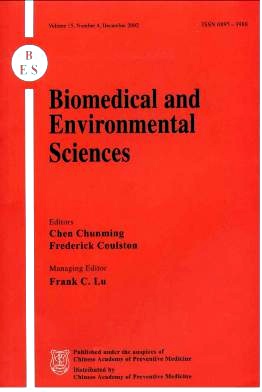Chromium(VI)-induced Production of Reactive Oxygen Species, Change of Plasma Membrane Potential and Dissipation of Mitochondria Membrane Potential in Chinese Hamster Lung Cell Cultures
-
Key words:
- Membrane Potential /
- membrane potential /
- Reactive Oxygen Species /
- cell cultures /
- cationic dye
Abstract: Objective To examine whether Reactive Oxygen Species (ROS) is generated, and whether plasma membrane potential and mitochondrial membrane potential are depolarized in Chinese Hamster Lung (CHL) cell lines exposed to Cr (VI). Methods CHL cells were incubated with Cr(VI) at 10 μmol/L, 2.5 μmol/L, 0.65 μmol/L for 3 and 6 hours, respectively. The production of ROS was performed by using 2,7_dichlorofluorescin diacetate; The changes in plasma membrane potential were estimated using fluorescent cationic dye DiBAC4; And the changes in mitochondria membrane potential were estimated using fluorescent dye Rhodamine 123. Results The ROS levels in CHL cells increased in all treated groups compared with the control group (P<0.01); The plasma membrane potential and mitochondrial membrane potential in CHL cells dissipated after incubated with Cr(VI) at 10 μmol/L for 3 hours and 6 hours (P<0.01), at 2.5 μmol/L for 6 hours (P<0.01 or 0.05). Conclusion Cr(VI) causes the dissipation of plasma membrane potential and mitochondrial membrane potential in CHL cell cultures, and Cr(VI)_induced ROS may play a role in the injuries.
| Citation: | XIE YI, ZHUANG ZHI_XIONG. Chromium(VI)-induced Production of Reactive Oxygen Species, Change of Plasma Membrane Potential and Dissipation of Mitochondria Membrane Potential in Chinese Hamster Lung Cell Cultures[J]. Biomedical and Environmental Sciences, 2001, 14(3): 199-206. |







 Quick Links
Quick Links
 DownLoad:
DownLoad: